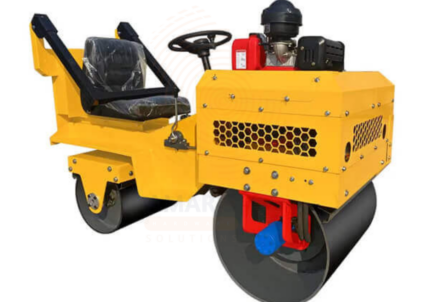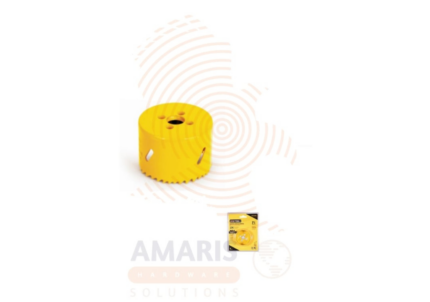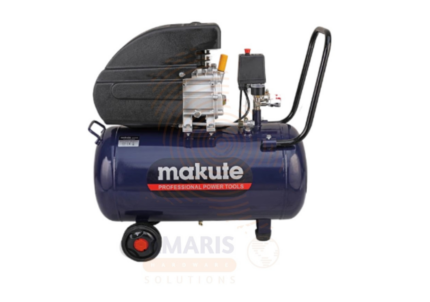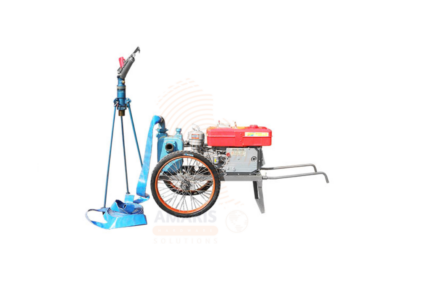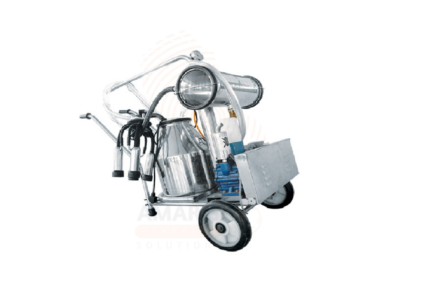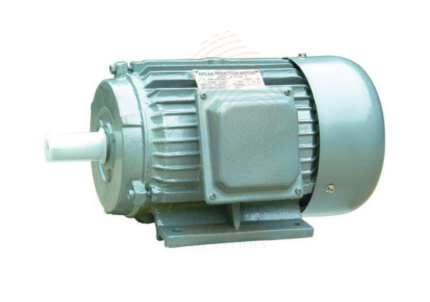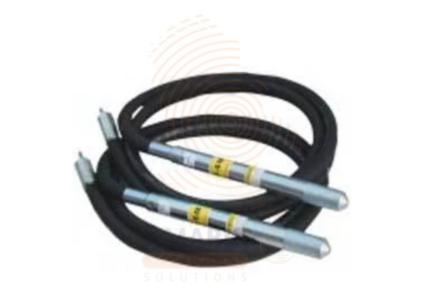Back to products
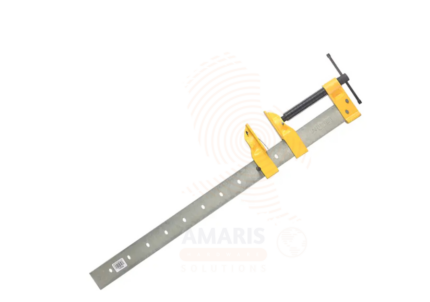

S-Clamp
$43.46 Original price was: $43.46.$41.29Current price is: $41.29.
Roasting Cylinder
WhatsApp Order
A Roasting Cylinder is a mechanical device designed for uniform roasting of agricultural products such as coffee beans, peanuts, cocoa, grains, and seeds. It typically consists of a rotating drum or cylinder, often heated by gas, electricity, or firewood, which ensures even exposure to heat and prevents burning. Roasting cylinders are commonly used in food processing, agriculture, and small-scale commercial operations to enhance flavor, aroma, and shelf life of the products.
Description
Table of Contents
ToggleRoasting Cylinder
Uses
-
Coffee Bean Roasting
o Uniformly roasts coffee beans to develop flavor, aroma, and color.
o Essential in coffee production for quality control and consistency. -
Peanut and Nut Roasting
o Roasts peanuts, cashews, almonds, and similar nuts evenly.
o Improves taste, texture, and reduces moisture for longer storage. -
Cocoa Bean Roasting
o Used in chocolate production to develop desired cocoa flavors.
o Removes unwanted moisture and microbial contaminants. -
Seed and Grain Roasting
o Roasts sesame, sunflower seeds, and grains for culinary or commercial purposes.
o Enhances flavor and digestibility. -
Spice Roasting
o Used to roast spices like cumin, coriander, and fennel.
o Increases aroma and oil release during grinding. -
Snack Food Processing
o Roasts raw ingredients used in snack production.
o Helps in creating crispy textures and appetizing flavors. -
Preservation
o Reduces moisture content and microbial activity, increasing shelf life.
o Minimizes the need for artificial preservatives. -
Small-Scale Commercial Use
o Ideal for small food businesses and roasteries.
o Used for batch roasting of niche or specialty products. -
Laboratory and Sample Roasting
o Allows for testing roast levels and flavor development in food labs.
SAFETY HANDLING PRECAUTIONS
Safety Precautions
-
Wear Protective Gear
o Use heat-resistant gloves, safety goggles, and aprons to protect from burns and hot surfaces.
o Closed-toe footwear is recommended. -
Pre-Use Inspection
o Check for cracks, leaks, loose fittings, and drum alignment before use.
o Verify temperature controls and rotation mechanisms. -
Safe Operation Practices
o Do not overload the cylinder—follow manufacturer’s capacity limits.
o Avoid reaching into the drum while it’s rotating or hot.
o Monitor temperature to prevent burning or fire hazards. -
Fire Safety
o Keep fire extinguishers nearby, especially when using open flame or gas burners.
o Use in well-ventilated areas to avoid accumulation of smoke or gas. -
Electrical Safety
o For electric models, ensure proper grounding and use dry hands when handling plugs.
o Inspect cables for wear and damage. -
Proper Loading and Unloading
o Use tools or scoops to load and unload hot materials.
o Allow cooling time before opening or cleaning. -
Clean Regularly
o Prevent residue buildup which can ignite or contaminate food.
o Clean after each use and inspect for obstructions. -
Training and Supervision
o Only trained personnel should operate roasting cylinders.
o Supervise during active roasting to respond quickly to issues.
Related products
Bi-Metal Hole Saw
A Bi-Metal Hole Saw Set refers to a collection of nine hole saws, each constructed with a bi-metal design. A hole saw is a cylindrical cutting tool used to create holes in various materials such as wood, metal, plastic, and more. The term "bi-metal" indicates that the hole saws are made from two different types of metals, typically high-speed steel (HSS) and a more durable alloy like cobalt. This combination enhances the hole saw's cutting performance, making it suitable for a wide range of applications and providing increased durability and longevity. The set typically includes hole saws of different sizes to accommodate various hole diameters, making it a versatile tool for professionals and DIY enthusiasts alike.
Bi-Metal Hole Saw Set
A Bi-Metal Hole Saw Set refers to a collection of nine hole saws, each constructed with a bi-metal design. A hole saw is a cylindrical cutting tool used to create holes in various materials such as wood, metal, plastic, and more. The term "bi-metal" indicates that the hole saws are made from two different types of metals, typically high-speed steel (HSS) and a more durable alloy like cobalt. This combination enhances the hole saw's cutting performance, making it suitable for a wide range of applications and providing increased durability and longevity. The set typically includes hole saws of different sizes to accommodate various hole diameters, making it a versatile tool for professionals and DIY enthusiasts alike.
Direct Drive Air Compressor
A direct drive air compressor is a type of air compressor where the motor is directly connected to the compressor pump, typically without the use of belts or gears. In this configuration, the motor and the pump share a common shaft, resulting in a more compact and efficient design. Direct drive compressors are known for their simplicity, reduced maintenance requirements, and higher power transmission efficiency compared to belt-driven or gear-driven counterparts. They are commonly used in various applications, including powering pneumatic tools, inflating tires, and providing compressed air for industrial processes.
High Pressure Hose
A High Pressure Hose is a flexible and reinforced conduit designed to transport fluids, such as water, oil, or gas, under elevated pressure levels. Typically constructed with durable materials, such as synthetic rubber or thermoplastic compounds, high-pressure hoses are engineered to withstand and contain the force exerted by the fluid they convey. These hoses are commonly used in various industrial, automotive, and hydraulic applications where the need for efficient and secure fluid transfer at elevated pressures is paramount.
Irrigation Pump Set
An Irrigation Pump Set is a complete system designed to move water efficiently from a source—such as a river, well, pond, or tank—to agricultural fields for crop irrigation. It typically consists of a water pump (centrifugal or submersible), an engine or motor (electric or fuel-powered), piping connections, filters, and sometimes a control panel or automation features. These pump sets are vital in agricultural operations, ensuring consistent and controlled water distribution to crops. They are used across small-scale farms to large commercial operations and are compatible with various irrigation methods like drip, sprinkler, or flood systems. Irrigation pump sets are built for durability, high flow rates, and long operational hours in tough outdoor conditions.
Milking Machine
A Milking Machine is a mechanized system designed to extract milk from dairy animals such as cows, goats, and sheep in an efficient, hygienic, and consistent manner. It typically consists of a vacuum pump, pulsator, teat cups, milk container, and tubing system. The machine works by creating a vacuum that gently draws milk from the animal's udder through the teat cups and collects it into a sealed container, minimizing contamination. Milking machines improve milking speed, reduce manual labor, and enhance udder health by maintaining a uniform milking routine. They are essential in dairy farming operations of all scales—from smallholder farms to large commercial dairies—where consistency and hygiene are critical for milk production.
Motor
A Motor is an electromechanical device that converts electrical energy into mechanical motion, commonly used to power machines, tools, pumps, fans, and other mechanical systems. Motors come in various types, including AC motors, DC motors, single-phase, and three-phase variants, each designed to match specific application requirements. They vary in size, torque, speed, and efficiency depending on the use case—from small appliances to industrial machinery. Electric motors are essential components in automation, manufacturing, HVAC systems, agricultural equipment, and countless mechanical operations where consistent, reliable power is required for movement or rotation. Their energy efficiency, long lifespan, and ease of integration make them a cornerstone of mechanical design.
Poker vibrator shaft
A poker vibrator shaft, also known as a concrete vibrator shaft or simply a vibrator shaft, is a tool used in construction and concrete work. It consists of a long, slender, and flexible rod or shaft, typically made of steel, with an eccentrically mounted vibrator head at one end. The vibrator head contains an electric or pneumatic motor that generates vibrations.
The primary purpose of a poker vibrator shaft is to consolidate and remove air pockets or bubbles within freshly poured concrete. When the vibrator head is immersed in the concrete mix, the vibrations it generates help to ensure uniform distribution of the concrete, enhance its density, and eliminate voids. This process, known as concrete consolidation, improves the strength and durability of the concrete structure.


 Acrylic Sealants
Acrylic Sealants Construction Adhesives
Construction Adhesives Double-Sided Tape
Double-Sided Tape Duct Tape
Duct Tape Electrical Tape
Electrical Tape Epoxy & Resins
Epoxy & Resins Masking Tape
Masking Tape
 Automotive Wrenches & Socket Sets
Automotive Wrenches & Socket Sets Battery Chargers & Jump Starters
Battery Chargers & Jump Starters Car Jacks & Stands
Car Jacks & Stands Car Wash & Detailing Products
Car Wash & Detailing Products Diagnostic Tools
Diagnostic Tools Tire Inflators
Tire Inflators Vehicle Lighting
Vehicle Lighting Oil & Lubricants
Oil & Lubricants
 Adhesives & Sealants
Adhesives & Sealants Bricks & Blocks
Bricks & Blocks Cement & Concrete
Cement & Concrete Drywall & Plaster
Drywall & Plaster Flooring (Tiles, Wood, Laminate)
Flooring (Tiles, Wood, Laminate) Lumber & Plywood
Lumber & Plywood Paints, Primers & Coatings
Paints, Primers & Coatings Insulation Materials
Insulation Materials Roofing Materials
Roofing Materials
 Circuit Breakers
Circuit Breakers Electrical Cables & Wires
Electrical Cables & Wires Switches & Sockets
Switches & Sockets Fuses & Relays
Fuses & Relays Connectors & Terminals
Connectors & Terminals Electrical Boxes & Panels
Electrical Boxes & Panels Conduit & Fittings
Conduit & Fittings Lighting Fixtures & Bulbs
Lighting Fixtures & Bulbs Extension Cords & Power Strips
Extension Cords & Power Strips
 Anchors
Anchors Bolts
Bolts Clips & Clamps
Clips & Clamps Screws
Screws Nuts
Nuts Washers
Washers Rivets
Rivets Nails
Nails Threaded Rods
Threaded Rods
 Hammers
Hammers Measuring Tools (Tapes, Levels, Calipers)
Measuring Tools (Tapes, Levels, Calipers) Screwdrivers
Screwdrivers Pliers & Cutters
Pliers & Cutters Saws & Blades
Saws & Blades Chisels & Punches
Chisels & Punches Allen Keys & Hex Keys
Allen Keys & Hex Keys Ratchets & Socket Sets
Ratchets & Socket Sets Wrenches & Spanners
Wrenches & Spanners
 Power Tool Accessories (Blades, Bits, Discs)
Power Tool Accessories (Blades, Bits, Discs) Rotary Tools
Rotary Tools Saws (Circular, Jigsaw, Reciprocating)
Saws (Circular, Jigsaw, Reciprocating) Drills & Drivers
Drills & Drivers Grinders & Sanders
Grinders & Sanders Heat Guns
Heat Guns Nail Guns
Nail Guns Impact Wrenches
Impact Wrenches Batteries & Chargers
Batteries & Chargers
 Pipes & Fittings (PVC, Copper, PEX)
Pipes & Fittings (PVC, Copper, PEX) Plumbing Tools
Plumbing Tools Pumps & Motors
Pumps & Motors Sealants & Adhesives for Plumbing
Sealants & Adhesives for Plumbing Valves & Taps
Valves & Taps Water Heaters
Water Heaters Drainage Systems
Drainage Systems Faucets & Fixtures
Faucets & Fixtures Hoses & Tubing
Hoses & Tubing
 Hinges & Latches
Hinges & Latches Hooks & Brackets
Hooks & Brackets Window Hardware
Window Hardware Chains & Cables
Chains & Cables Casters & Wheels
Casters & Wheels Shelving & Storage Systems
Shelving & Storage Systems Door Handles & Locks
Door Handles & Locks Drawer Slides & Cabinet Hardware
Drawer Slides & Cabinet Hardware
 Personal Protective Equipment (PPE)
Personal Protective Equipment (PPE) Respirators & Masks
Respirators & Masks Safety Glasses
Safety Glasses Safes
Safes Security Cameras
Security Cameras Gloves
Gloves Helmets
Helmets Ear Protection
Ear Protection Fire Safety Equipment
Fire Safety Equipment Locks & Padlocks
Locks & Padlocks Motion Sensors & Alarms
Motion Sensors & Alarms
 Garden Fencing
Garden Fencing Garden Furniture Hardware
Garden Furniture Hardware Lawn Mowers
Lawn Mowers Trimmers & Edgers
Trimmers & Edgers Shovels & Spades
Shovels & Spades Rakes & Hoes
Rakes & Hoes Pruning Shears & Loppers
Pruning Shears & Loppers Watering Systems (Hoses, Sprinklers, Nozzles)
Watering Systems (Hoses, Sprinklers, Nozzles)
 Interior Paints
Interior Paints Paint Brushes & Rollers
Paint Brushes & Rollers Paint Strippers & Thinners
Paint Strippers & Thinners Paint Trays & Accessories
Paint Trays & Accessories Exterior Paints
Exterior Paints Spray Paints
Spray Paints Primers & Undercoats
Primers & Undercoats Varnishes & Stains
Varnishes & Stains
 Gaskets & Seals
Gaskets & Seals Hydraulic Fittings
Hydraulic Fittings Industrial Fasteners
Industrial Fasteners Industrial Hoses
Industrial Hoses Lubricants & Greases
Lubricants & Greases Metal Sheets & Bars
Metal Sheets & Bars Bearings & Bushings
Bearings & Bushings Belts & Pulleys
Belts & Pulleys
 HVAC Filters
HVAC Filters Insulation for HVAC
Insulation for HVAC Air Conditioners
Air Conditioners Refrigerants
Refrigerants Ventilation Ducts & Fittings
Ventilation Ducts & Fittings Thermostats & Controllers
Thermostats & Controllers Fans & Blowers
Fans & Blowers
 Pegboards & Hooks
Pegboards & Hooks Shelving Units
Shelving Units Storage Bins & Containers
Storage Bins & Containers Toolboxes & Tool Chests
Toolboxes & Tool Chests Workbenches
Workbenches Drawer Organizers
Drawer Organizers Labeling Supplies
Labeling Supplies
 Welding Accessories (Clamps, Brushes)
Welding Accessories (Clamps, Brushes) Welding Electrodes & Rods
Welding Electrodes & Rods Welding Helmets & Gloves
Welding Helmets & Gloves Welding Machines
Welding Machines Soldering Irons & Stations
Soldering Irons & Stations Flux & Solder Wire
Flux & Solder Wire
 Generator Accessories
Generator Accessories Inverters
Inverters Portable Generators
Portable Generators Power Inverters
Power Inverters Transfer Switches
Transfer Switches Diesel & Gasoline Generators
Diesel & Gasoline Generators
 Transport Equipment: Carts, Dollies, and Hand Trucks
Transport Equipment: Carts, Dollies, and Hand Trucks Storage Solutions: Pallets, Racks, and Containers
Storage Solutions: Pallets, Racks, and Containers Lifting Equipment: Hoists, Cranes, and Jacks
Lifting Equipment: Hoists, Cranes, and Jacks Conveyors and Accessories: Belts and Rollers
Conveyors and Accessories: Belts and Rollers
